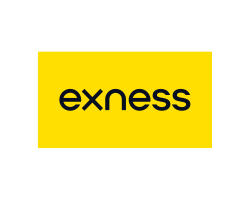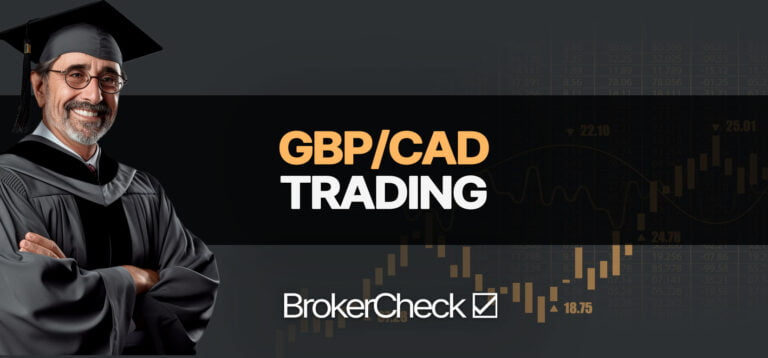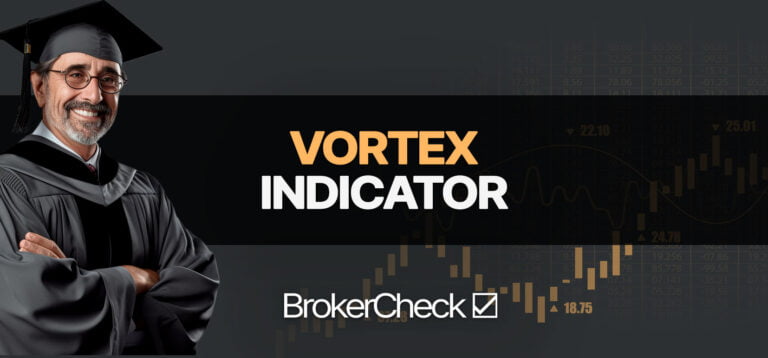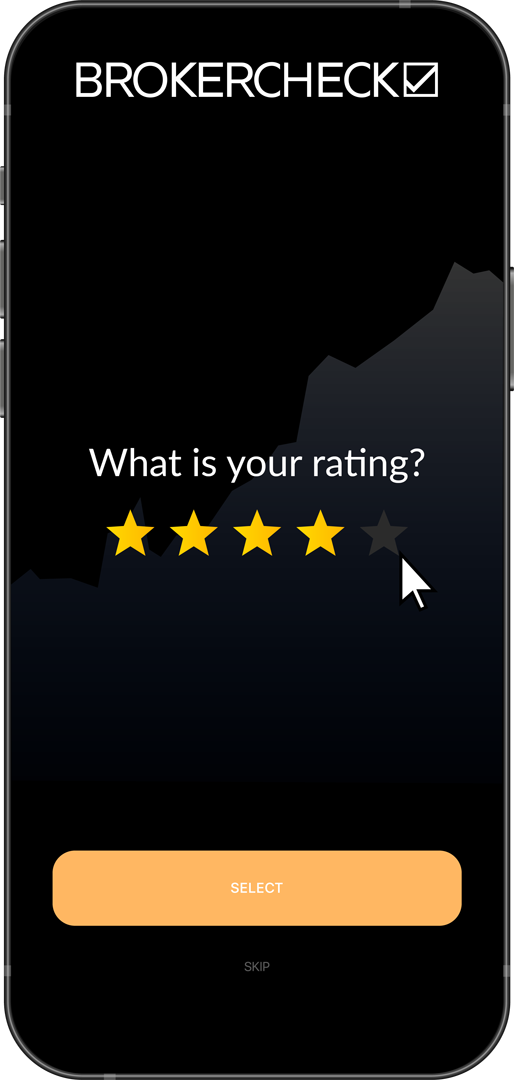1. What Is Triple EMA?
When incorporating the Triple EMA into a trading strategy, it is essential to understand its components and how they interact with market dynamics. Here’s a step-by-step breakdown of how the Triple EMA is typically calculated:
- Calculate the initial EMA:
- Choose a time period (e.g., 15 days).
- Calculate the EMA for this period.
- Calculate the second EMA (EMA of the EMA):
- Use the values from the first EMA as input.
- Apply the same time period to calculate this EMA.
- Calculate the third EMA (EMA of the EMA of the EMA):
- Use the values from the second EMA as input.
- Apply the same time period to calculate this final EMA.
The result is the Triple EMA value, which can be plotted on a price chart.
| Step | Calculation Process |
|---|---|
| 1 | Initial EMA of price |
| 2 | EMA of the first EMA |
| 3 | EMA of the second EMA (Triple EMA) |
Trading signals generated by the Triple EMA can be categorized as follows:
- Bullish Signal: When the Triple EMA line crosses above the price action or another moving average, it may indicate an uptrend, prompting a buy decision.
- Bearish Signal: Conversely, if the Triple EMA line crosses below the price action or another moving average, it may signify a downtrend, suggesting a sell decision.
Advantages of using the Triple EMA include:
- Reduced Lag: By emphasizing recent prices, it reacts more quickly to price changes than simple EMAs.
- Trend Identification: Helps in distinguishing between minor fluctuations and significant price movements, clarifying trend direction.
- Filtering Noise: Smoothens short-term volatility, providing a clearer view of the market trend.
However, traders should be aware of the limitations:
- False Signals: In sideways or ranging markets, the Triple EMA can produce false signals, leading to poor trading decisions.
- Complexity: The multiple layers of smoothing can make it more complex to interpret, especially for novice traders.
Traders often combine the Triple EMA with other indicators to confirm trends and signals. For instance, using the Relative Strength Index (RSI) or MACD alongside the Triple EMA can provide additional insights into market momentum and potential overbought or oversold conditions.

Practical Application:
- Timeframe Selection: The choice of timeframe for the Triple EMA is crucial. Shorter timeframes may be more suited for day traders, while longer timeframes may benefit swing traders or investors.
- Confirmation: Always seek confirmation from other technical indicators or price patterns before executing trades based on the Triple EMA.
- Risk Management: Employ stop-loss orders and position sizing to manage risk when trading on Triple EMA signals.
By integrating the Triple EMA into a comprehensive trading plan, traders can leverage this indicator to enhance their market analysis and potentially increase their trading success.
2. How to Set Up Triple EMA?
When implementing the Triple EMA, it’s imperative to understand how these averages interact with each other to signal potential trading opportunities.
Crossovers are a primary signal generated by Triple EMA setups. When the short-term EMA crosses above the medium-term EMA, it can be an indication of upward momentum, suggesting a potential entry point for a long position. Conversely, if the short-term EMA crosses below, it could signal downward momentum and a possible short entry.
Divergences between the EMAs also provide insight. If the EMAs are diverging, with the short-term EMA pulling away from the medium and long-term EMAs, this can indicate strengthening trend momentum. On the other hand, if the EMAs start to converge, it might suggest that the current trend is losing strength and a reversal could be imminent.
Support and Resistance Levels can be identified using Triple EMA. Often, the medium or long-term EMA can act as dynamic support or resistance levels. Price action bouncing off these levels can reaffirm the trend, while a break through these levels might indicate a trend change.
Trade Management is where the Triple EMA can really shine. By observing the relationship between the price and the EMAs, traders can adjust stop-loss orders to manage risk. For example, a trader might place a stop-loss order just below the long-term EMA in a long trade, or adjust the stop-loss order as the EMAs move.
EMA Configuration Example:
| EMA Type | Period | Common Use |
|---|---|---|
| Short-Term | 5-period | Entry signals |
| Medium-Term | 13-period | Trend direction |
| Long-Term | 26-period | Dynamic S&R |
Understanding these signals and how to interpret the interactions between the EMAs is crucial for traders looking to leverage the Triple EMA strategy effectively. It’s not just about the setup, but also about the ongoing analysis and adjustment based on the indicators’ feedback.
2.1. Selecting the Right Time Frame
When deploying the Triple Exponential Moving Average (Triple EMA), traders must meticulously select an appropriate time frame to match their trading strategy and goals. The Triple EMA’s responsiveness and the nature of the signals it generates are inextricably linked to the chosen time frame.
Short-Term Traders
- Time Frames: 1-minute to 15-minute charts
- Characteristics:
- Higher frequency of trading signals
- Greater sensitivity to price movements
- Increased potential for market noise and false signals
Long-Term Traders
- Time Frames: 4-hour, daily, or weekly charts
- Characteristics:
- Smoother indicator performance with less noise
- Clearer depiction of long-term trends
- Reduced number of signals, potential delays in trend detection
Swing Traders
- Time Frames: 30-minute to 1-hour charts
- Characteristics:
- Balanced approach between signal frequency and noise reduction
- Suitable for capturing medium-term market movements
Aligning Time Frame with Trading Style and Risk Tolerance
- Shorter Time Frames: Suit traders seeking more action and willing to accept more risk.
- Longer Time Frames: Benefit traders requiring more stability and less frequent, but potentially more reliable, signals.
- Intermediate Time Frames: Offer a compromise for those looking for a balance between short and long-term trading dynamics.
Backtesting for Optimization
- Traders should conduct thorough backtesting on historical data to determine the Triple EMA’s performance across different time frames.
- This process helps in fine-tuning the indicator settings to align with specific trading objectives and risk profiles.
- Effective backtesting can lead to more informed decisions when applying the Triple EMA to live trading.
By carefully selecting the time frame that resonates with their trading style, traders can leverage the Triple EMA to enhance their market analysis and decision-making process.
2.2. Choosing EMA Periods
When selecting EMA periods for the Triple EMA, it’s important to consider the type of trading strategy you are implementing. Are you a day trader looking for quick, short-term signals, or a swing trader aiming for longer-term trend confirmations? Your approach will dictate the period settings.
Day traders might opt for a combination like:
- Short-term EMA: 5 periods
- Intermediate EMA: 8 periods
- Long-term EMA: 13 periods
This setup provides rapid responses to price movements, which is crucial for capitalizing on small, intraday trends.
Alternatively, swing traders may prefer a setup such as:
- Short-term EMA: 10 periods
- Intermediate EMA: 20 periods
- Long-term EMA: 50 periods
This configuration offers a smoother curve that filters out the noise of short-term fluctuations, focusing on more significant trend shifts suitable for trades that last several days to weeks.
Key considerations when choosing EMA periods:
- Market volatility: High volatility may require shorter periods to adapt quickly, whereas low volatility benefits from longer periods to avoid market “noise.”
- Asset behavior: Some assets are inherently more volatile or trend differently. Customizing EMA periods to the asset’s characteristics can improve signal accuracy.
- Time frame: The chart time frame influences the effectiveness of EMA periods. A 5-period EMA on a 1-minute chart is vastly different from a 5-period EMA on a daily chart.
Backtesting is invaluable in refining EMA period choices. Historical data can reveal how different settings would have performed, allowing traders to fine-tune their approach. Here’s an example of a backtest comparison table:
| EMA Periods | Number of Trades | Win Rate | Average Profit |
|---|---|---|---|
| 5, 13, 34 | 120 | 55% | 1.8% |
| 10, 20, 50 | 75 | 60% | 2.5% |

Adaptability is crucial. Markets evolve, and what worked in the past may not work in the future. Regularly reviewing and adjusting EMA periods ensures that the Triple EMA remains a relevant and effective tool in a trader’s arsenal.
2.3. Configuring EMA on Trading Platforms
When configuring the Triple EMA, traders should carefully select the time periods for each EMA to align with their trading strategy. A common set of periods might be 5, 13, and 26 periods for the short, medium, and long-term EMAs, respectively. However, these values can be adjusted based on the trader’s analysis and the time frame of the chart.
Here’s a step-by-step guide to configuring the Triple EMA:
- Open the Indicator List: Access the list of available indicators on your trading platform.
- Add the EMA Indicator: Locate and add the Exponential Moving Average (EMA) to your chart three times.
- Set the Periods: Input the desired periods for each EMA. A table for a common Triple EMA setup could look like this:| EMA Type | Period | Color | |———-|——–|——–| | Fast EMA | 5 | Red | | Medium EMA | 13 | Green | | Slow EMA | 26 | Blue |
- Customize Visuals: Adjust the color and thickness for each EMA to ensure they are easily distinguishable on the chart.
- Apply to Chart: Confirm and apply the settings to add the EMAs to your chart.
- Save the Template: If possible, save these settings as a template for future use.
By following these steps, the Triple EMA will be visible on the chart, providing dynamic support and resistance levels that can inform trade entries and exits. Traders should monitor the crossovers of the EMAs, as these can signal potential trend reversals or continuations.
It’s also important to backtest the Triple EMA setup to ensure it resonates with the trader’s style and the market’s behavior. Adjusting the periods may be necessary to fine-tune the indicator’s responsiveness to price action.
Risk management should always accompany the use of technical indicators. The Triple EMA can be a powerful tool, but it should not be the sole basis for trading decisions. Integrating price action, volume, and other indicators can enhance the effectiveness of the Triple EMA strategy.
3. How to Use Triple EMA for Trading?
The Triple EMA, also known as the TEMA, is a powerful tool for traders looking to capitalize on market trends. This indicator is especially useful for smoothing out price fluctuations and providing a clearer view of the market direction. To effectively use the Triple EMA, traders should consider the following steps:
- Selection of Time Periods: Choose three different time periods for the EMAs. Commonly, traders might use a combination such as 5-day, 10-day, and 20-day EMAs, but these can be adjusted based on the trader’s strategy and the time frame of the chart.
- Chart Application: Apply the three selected EMAs to the price chart. The interaction between these moving averages will form the basis for trading signals.
- Interpretation of Crossovers: Pay close attention to the crossovers of the EMAs.
- A bullish signal is given when the shortest EMA crosses above both the medium and long-term EMAs.
- A bearish signal is generated when the shortest EMA crosses below the other two.
- Trend Confirmation: Look for the EMAs to fan out and separate from one another, which typically indicates strength in the current trend.
- Use of Additional Indicators: Enhance the TEMA signals by incorporating other technical indicators for further validation of trend strength or potential reversals.
- Risk Management: Always employ stop-loss orders and consider the overall market context to avoid being caught in false trends or volatile market reversals.
| Bullish Signals | Bearish Signals |
|---|---|
| Shortest EMA > Medium EMA > Longest EMA | Shortest EMA < Medium EMA < Longest EMA |
| EMAs diverging in an upward direction | EMAs diverging in a downward direction |
| Supported by other indicators (e.g., RSI > 50) | Supported by other indicators (e.g., RSI < 50) |

Practical Tips for Traders:
- Backtest the Triple EMA strategy on historical data to understand its effectiveness in various market conditions.
- Use the Triple EMA in conjunction with price action and support/resistance levels for a more comprehensive analysis.
- Be aware of economic news releases that can cause sudden market moves, potentially leading to false signals.
- Adjust the time periods of the EMAs according to the volatility of the trading instrument.
- Keep in mind that the Triple EMA is a trend-following indicator and may not perform well in range-bound or choppy markets.
By following these guidelines, traders can leverage the Triple EMA to enhance their trading strategies, making informed decisions based on the dynamic interplay of short, medium, and long-term market trends.
3.1. Identifying Trend Directions
When utilizing the Triple EMA strategy, traders must be aware of false signals. Market noise can lead to temporary crossovers that do not signify a true trend reversal. To mitigate this, some traders employ additional filters, such as volume indicators or waiting for a confirmation candle after a crossover.
In the context of volatile markets, the Triple EMA can help smooth out price fluctuations and provide a clearer picture of the underlying trend. However, during periods of consolidation or range-bound markets, the effectiveness of EMAs can diminish, as the averages may entangle and produce a series of whipsaws.
Risk management is crucial when trading based on Triple EMA signals. Setting stop-loss orders at strategic levels can protect traders from sudden market reversals. Moreover, combining Triple EMA analysis with other technical tools, such as support and resistance levels, RSI, or MACD, can enhance decision-making and lead to more robust trading strategies.
| Trend Condition | Short EMA | Intermediate EMA | Long EMA |
|---|---|---|---|
| Bullish Trend | Above | Middle | Below |
| Bearish Trend | Below | Middle | Above |
| Strong Trend | Widening gap between lines | ||
| Weak Trend | Narrowing gap between lines |
Traders often backtest the Triple EMA strategy on historical data to determine its effectiveness in different market conditions. Through backtesting, one can identify the optimal settings for the lengths of the EMAs and refine the strategy to suit individual trading styles and risk tolerances.
Incorporating the Triple EMA into a trading plan requires attention to detail and discipline. Regular analysis of EMA configurations, combined with a sound understanding of market context, can guide traders in making informed decisions. As with any technical indicator, the Triple EMA is not infallible and should be used as part of a comprehensive trading strategy.
3.2. Spotting Entry and Exit Points
Triple EMA Crossover Strategy
The Triple EMA crossover strategy is a popular technique among traders looking to capitalize on strong trends. It involves three Exponential Moving Averages: a short-term, a medium-term, and a long-term EMA. Traders observe the relationship between these EMAs to make informed decisions on when to enter and exit trades.
Identifying Entry Points:
- Bullish Entry: When the shortest EMA (e.g., 5-period) crosses above both the medium (e.g., 13-period) and long-term (e.g., 34-period) EMAs.
- Bearish Entry: When the shortest EMA crosses below the medium and long-term EMAs.
Determining Exit Points:
- Bullish Exit: Consider exiting when the short-term EMA crosses below the medium-term EMA.
- Bearish Exit: Exit might be prudent when the short-term EMA crosses above the medium-term EMA.
Perfect Order Confirmation:
- Bullish Confirmation: The EMAs align with the shortest EMA at the top, the medium in the middle, and the longest at the bottom.
- Bearish Confirmation: The shortest EMA is at the bottom, the medium in the middle, and the longest EMA at the top.
Refining Entry and Exit Points with Price Action
Enhancing Entry Signals:
- Bullish Patterns: A bullish engulfing pattern near the Triple EMA bullish crossover can reinforce a buy signal.
- Bearish Patterns: A bearish engulfing pattern at a bearish crossover can confirm a sell signal.
Risk Management with Stop-Loss Orders:
- Bullish Trades: Set a stop-loss just below the longer-term EMA.
- Bearish Trades: Place a stop-loss just above the longer-term EMA.
EMA Configurations and Candlestick Patterns:
| EMA Short (5-period) | EMA Medium (13-period) | EMA Long (34-period) | Candlestick Pattern | Trade Signal |
|---|---|---|---|---|
| Crosses above | Crosses above | Steady | Bullish Engulfing | Strong Buy |
| Steady | Steady | Steady | Bearish Engulfing | Confirm Sell |
| Crosses below | Crosses below | Steady | Doji | Possible Sell |
| Steady | Crosses above | Steady | Hammer | Weak Buy |
By integrating these techniques, traders can create a comprehensive approach to trading with the Triple EMA, leveraging the strengths of this indicator while being mindful of the risks involved.
3.3. Combining Triple EMA with Other Indicators
Incorporating the Triple EMA with the MACD (Moving Average Convergence Divergence) is another strategy that traders use for a multi-faceted analysis. The MACD’s ability to signal potential reversals through its histogram and signal line crossovers complements the trend-following nature of the Triple EMA. When the MACD line crosses above the signal line in the direction of the Triple EMA trend, it can be seen as a confirmation of continued momentum.
Fibonacci retracement levels are another tool that can be used alongside the Triple EMA. Traders look for price action to touch or approach key Fibonacci levels, such as 38.2%, 50%, or 61.8%, while also aligning with the Triple EMA’s direction. This can indicate potential support or resistance areas, providing additional layers to entry or exit strategies.
The Stochastic Oscillator can also be paired with the Triple EMA to pinpoint overbought or oversold conditions within a trend. A stochastic reading above 80 indicates overbought conditions, while a reading below 20 suggests oversold conditions. Traders can watch for these signals to align with the Triple EMA trend for higher confidence trades.
Chart Patterns, such as triangles, flags, and wedges, can be used in tandem with the Triple EMA to predict price breakouts. When a chart pattern is nearing completion, traders can look to the Triple EMA to confirm the potential breakout direction.
| Indicator | Purpose in Combination with Triple EMA | Benefit to Traders |
|---|---|---|
| RSI | Measures trend strength and identifies overbought/oversold zones | Confirms momentum and high-probability trade setups |
| Bollinger Bands | Assesses market volatility and price extremities | Signals potential reversals and trend strength |
| Volume Indicators | Confirms trend strength based on volume flow | Reinforces bullish or bearish signals |
| MACD | Signals potential trend reversals and momentum | Validates trade entries with trend-following momentum |
| Fibonacci Levels | Identifies potential support or resistance areas | Enhances precision in entry and exit points |
| Stochastic | Indicates overbought or oversold conditions within a trend | Provides additional trade confirmation |
| Chart Patterns | Predicts price breakouts | Confirms breakout direction with Triple EMA trend |
By blending the Triple EMA with other indicators, traders can tailor their strategies to fit their risk tolerance and trading style, leading to more informed and potentially profitable trading decisions. The key is in understanding how each indicator complements the Triple EMA and applying them in a way that aligns with the current market context.
4. What Are the Best Strategies for Triple EMA?
Divergence Trading with Triple EMA is another advanced strategy that can signal potential trend reversals. Traders look for discrepancies between the price movement and the Triple EMA lines. If the price makes a new high while the EMAs fail to do so, it could indicate a weakening uptrend and a possible bearish reversal. Similarly, if the price makes a new low but the EMAs do not, a bullish reversal might be on the horizon.
Triple EMA and Price Action is a strategy that emphasizes the importance of candlestick patterns and price structures. Traders using this strategy will look for price action signals, such as pin bars or engulfing patterns, that coincide with the Triple EMA. For instance, a bullish pin bar at a Triple EMA support level could reinforce the validity of a long position.
| Strategy | Description |
|---|---|
| Triple EMA Crossover Technique | Look for crossovers of short, medium, and long-term EMAs for potential entry and exit signals. |
| Triple EMA with Support/Resistance | Combine Triple EMA with key support and resistance levels to identify reversal points. |
| Divergence Trading | Monitor for divergence between price action and the Triple EMA lines to anticipate trend reversals. |
| Triple EMA and Price Action | Use candlestick patterns and price structures in conjunction with the Triple EMA to identify trading opportunities. |
| Risk Management | Implement stop-loss strategies and determine position sizes to protect trading capital. |
Backtesting Triple EMA Strategies is an essential step before implementing them in live trading. By analyzing how these strategies would have performed in the past, traders can refine their approach and adjust parameters such as the lengths of the EMAs or the stop-loss settings.
Adapting to Market Conditions is a key aspect of using the Triple EMA effectively. Volatile markets may require shorter EMAs to react more quickly to price changes, while in less volatile conditions, longer EMAs might provide more reliable signals.
Incorporating Indicators and Oscillators with the Triple EMA can enhance its effectiveness. Tools like the RSI (Relative Strength Index) or MACD (Moving Average Convergence Divergence) can provide additional insights into the strength of the trend and potential reversal points.
Continuous Learning and Adaptation are vital for traders who utilize the Triple EMA strategy. Keeping abreast of market news, understanding the impact of economic events, and staying flexible in strategy application will contribute to the ongoing success of a trader’s approach.
Traders who master the Triple EMA strategy often find it to be a versatile and valuable component of their trading arsenal. By staying disciplined and consistently applying these strategies within the context of a comprehensive trading plan, traders can strive to achieve consistent results over time.
4.1. Triple EMA Crossover Technique
In the application of the Triple EMA Crossover Technique, traders must be aware of the potential for false signals. Volatility in the market can cause EMAs to cross back and forth, leading to confusion and poor trading decisions. To mitigate this, it’s advisable to use additional technical indicators such as the Relative Strength Index (RSI) or the Moving Average Convergence Divergence (MACD) to provide further confirmation of the trend’s strength.
Risk management is another crucial aspect when employing this strategy. Traders should determine their stop-loss and take-profit levels in advance to manage their exposure to risk effectively. A common approach is to set a stop-loss just below the most recent swing low for a long position or above the swing high for a short position.
Here’s a quick reference for the Triple EMA Crossover signals:
| Market Condition | Signal | Action |
|---|---|---|
| Short-term EMA crosses above medium-term EMA | Bullish Signal | Consider entering a long position |
| Short-term EMA crosses below medium-term EMA | Bearish Signal | Consider entering a short position |
| Both short and medium-term EMA cross above long-term EMA | Strong Bullish Signal | Strong consideration for a long position |
| Both short and medium-term EMA cross below long-term EMA | Strong Bearish Signal | Strong consideration for a short position |
It’s also important to note that the Triple EMA Crossover Technique may not be suitable for all market conditions. During periods of consolidation or when the market lacks a clear trend, the technique may produce many false signals. In such cases, traders might look for other strategies that are better suited to range-bound markets.
Backtesting the strategy over historical data can help traders understand how the Triple EMA Crossover Technique would have performed in past market conditions, allowing for adjustments and refinements to the strategy before applying it to live trading.
Adaptability is key in trading. Therefore, traders should be prepared to adjust the time periods of the EMAs to better suit the specific characteristics of the market they are trading. For instance, in a highly volatile market, a trader might use longer time periods for the EMAs to filter out the noise.
Incorporating the Triple EMA Crossover Technique into a comprehensive trading plan, alongside sound money management principles and a thorough understanding of market dynamics, can offer traders a systematic approach to navigate the markets.
4.2. Triple EMA with Support and Resistance Levels
Incorporating the Triple EMA into a trading strategy can provide dynamic insights into market trends. The Triple EMA consists of three exponential moving averages that are calculated in a way to give more weight to recent price data. This reduces the lag that is typically associated with traditional moving averages, making the Triple EMA a favored tool among traders for identifying trend direction and strength.
Identifying Trend Direction with Triple EMA
- Uptrend Confirmation: When prices are consistently above the Triple EMA, it’s an indication of an uptrend. Traders might look for buying opportunities in this scenario.
- Downtrend Confirmation: Conversely, if prices are below the Triple EMA, it could signal a downtrend, and traders might consider selling or shorting opportunities.
Using Triple EMA with Support and Resistance
- At Support Levels: When the Triple EMA coincides with a support level and the price bounces off this area, it can be a strong buy signal.
- At Resistance Levels: If the Triple EMA aligns with a resistance level and the price reflects off this zone, it can be an indication to sell or go short.
Breakouts and the Triple EMA
- Breakout Above Resistance: Should the price break above resistance with the Triple EMA trending upwards, it may suggest a continuation of the bull run.
- Breakdown Below Support: A price breakdown below support with a downward Triple EMA trend could hint at an extension of the bearish trend.
Slope of the Triple EMA
- Steep Upward Slope: Indicates strong bullish momentum, which may reinforce buy signals at support levels or during breakouts.
- Steep Downward Slope: Suggests strong bearish momentum, potentially reinforcing sell signals at resistance levels or during breakdowns.
Risk Management Considerations
- False Breakouts: To guard against false breakouts, traders can wait for additional confirmation signals or use other technical indicators.
- Stop-Loss Orders: Placing stop-loss orders just below support or above resistance can help control losses if the market moves unexpectedly.
Triple EMA Settings and Timeframes
- Short-Term Trading: For day traders, shorter timeframes with quicker EMAs (e.g., 5, 13, and 34 periods) can be effective.
- Long-Term Trading: Swing or position traders may prefer longer timeframes with EMAs based on more extended periods (e.g., 50, 100, and 200 periods).
Combining Triple EMA with Other Indicators
- Volume: High trading volume on breakout or breakdown can confirm the strength of the move.
- Oscillators: Using RSI or Stochastics can help identify overbought or oversold conditions at key levels.
By carefully analyzing the Triple EMA in conjunction with support and resistance levels, traders can develop a nuanced understanding of market dynamics. However, always remember that no single indicator should be used in isolation. Combining the Triple EMA with other technical analysis tools and a sound risk management strategy can lead to a more comprehensive and effective trading approach.
4.3. Risk Management in Triple EMA Strategies
Incorporating diversification into a Triple EMA strategy portfolio is another effective risk management technique. By spreading investments across various assets, sectors, or financial instruments, traders can reduce the impact of a poor performance from any single trade. Diversification doesn’t guarantee profits or protect against all losses, but it can help smooth out volatility and reduce overall portfolio risk.
Regular portfolio rebalancing is an essential part of maintaining a diversified portfolio. As market movements can shift the weightings of assets within a portfolio, it is important to realign the portfolio to the original asset allocation. This process helps maintain the desired level of risk exposure and can prevent overconcentration in any single asset or sector.
Leverage management is another critical component. While leverage can amplify gains, it can also magnify losses. Traders using Triple EMA strategies should be cautious with the amount of leverage they use, ensuring it is in line with their risk tolerance and the specific market conditions.
Hedging can also be considered as part of a comprehensive risk management plan. By using financial instruments like options or futures contracts, traders can offset potential losses in their trading positions. For instance, purchasing a put option can act as an insurance policy against a downturn in a long equity position.
Psychological discipline is an often overlooked but significant aspect of risk management. Emotional decision-making can lead to overtrading, ignoring stop-loss orders, or deviating from a trading plan. Maintaining discipline and adhering to a well-thought-out trading strategy can help traders avoid common psychological pitfalls.
Key Risk Management Strategies for Triple EMA:
- Risk Tolerance: Define and adhere to a set percentage of capital at risk per trade.
- Stop-Loss Orders: Place stop-losses to limit potential losses when the market moves against your position.
- Position Sizing: Adjust position sizes based on volatility and the distance to stop-loss to manage risk.
- Strategy Review: Continuously evaluate and refine the trading strategy based on performance and market changes.
- Indicator Use: Supplement the Triple EMA with other technical indicators for additional insight and risk mitigation.
- Diversification: Spread investments across various assets or sectors to reduce risk.
- Rebalancing: Regularly adjust the portfolio to maintain the desired asset allocation.
- Leverage Management: Use leverage cautiously and within the bounds of individual risk tolerance.
- Hedging: Employ financial derivatives to protect against adverse price movements.
- Psychological Discipline: Maintain emotional control and adhere strictly to the trading plan.











